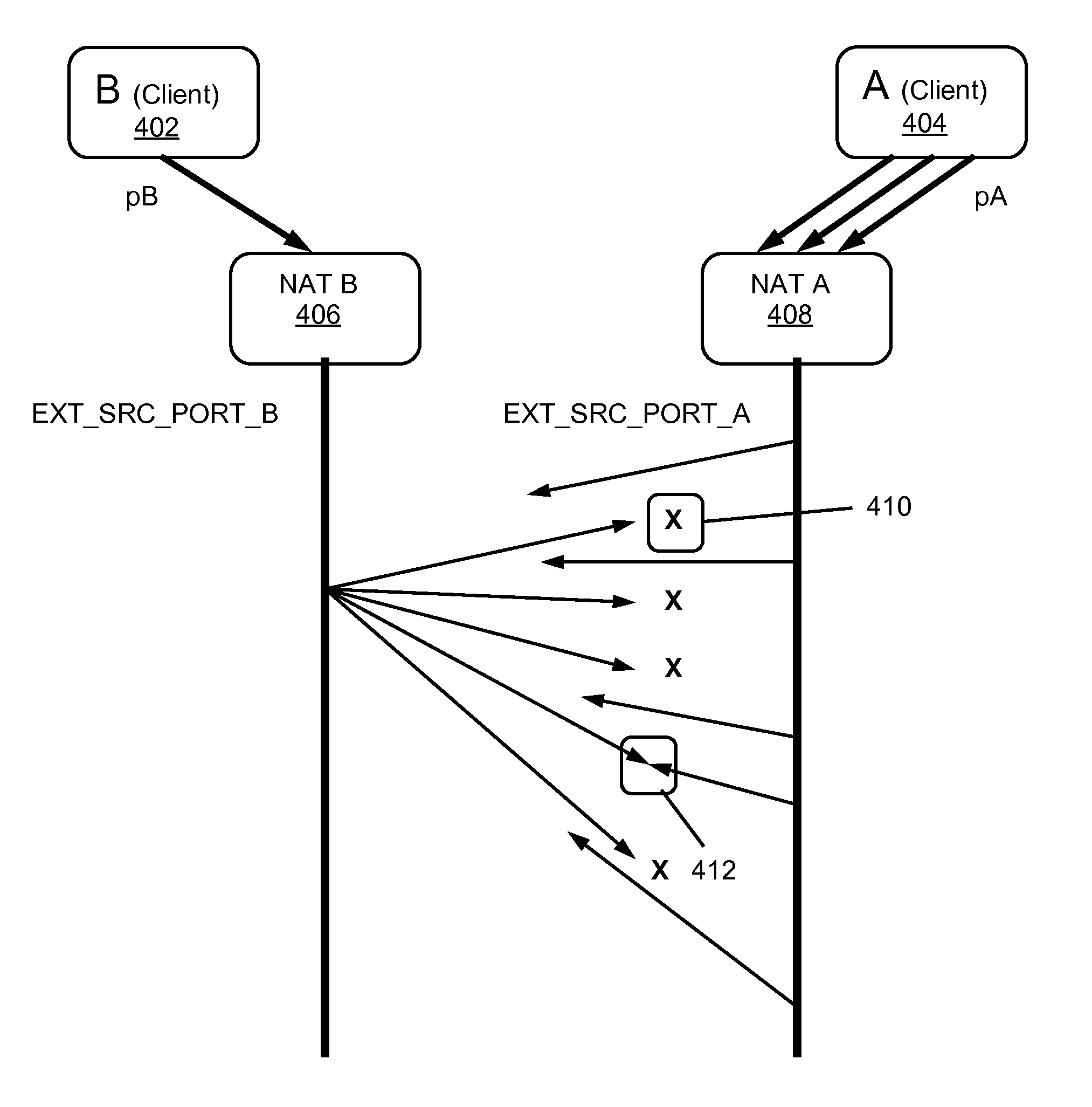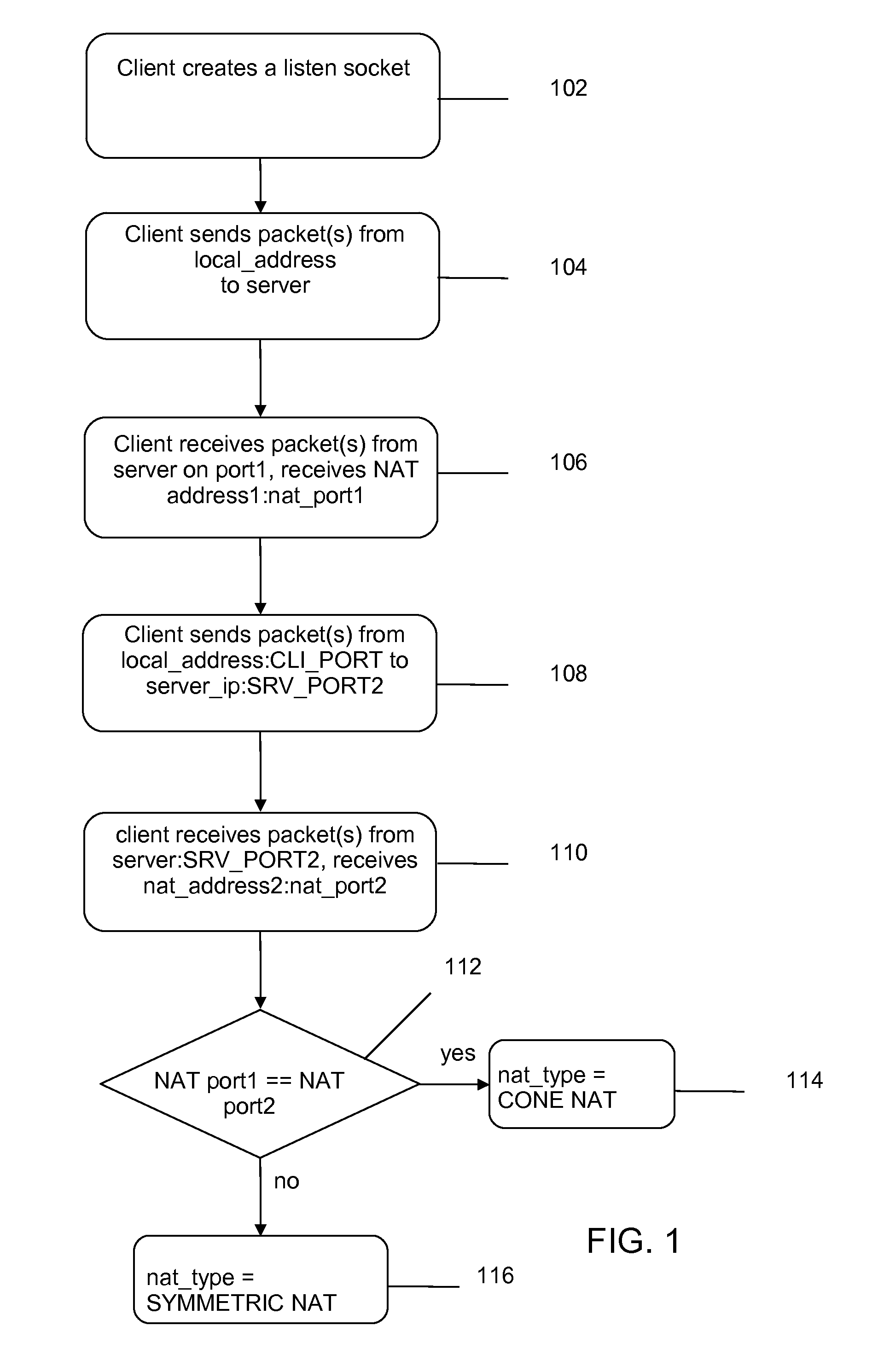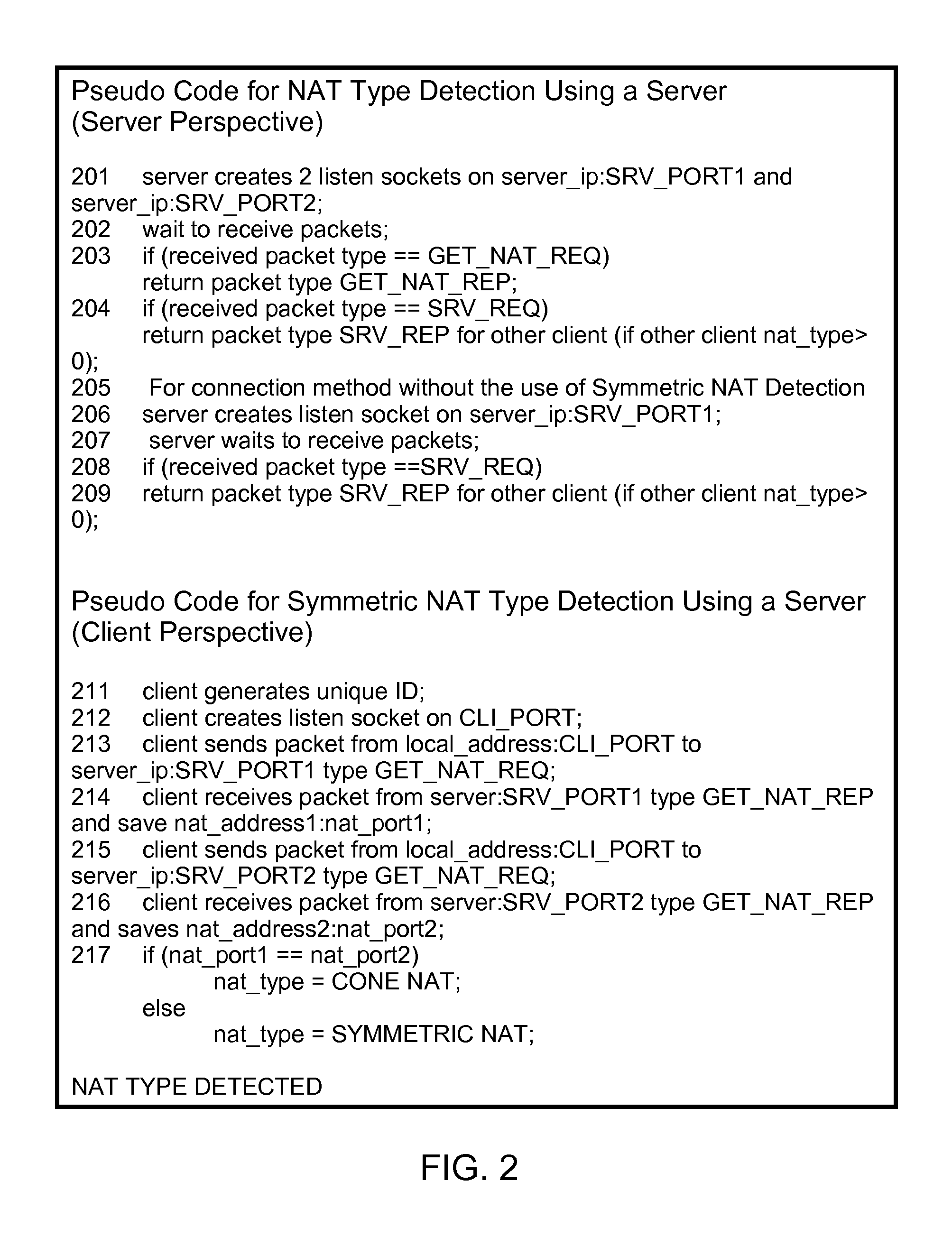Symmetric NAT traversal for direct communication in P2P networks when some of the routing NATs are symmetric
a technology of direct communication and symmetric routing, applied in the field of network communication, can solve the problems of insufficient 32-bit ip address, generated unpleasant side effects, etc., and achieve the effect of minimal server intervention and low cos
- Summary
- Abstract
- Description
- Claims
- Application Information
AI Technical Summary
Benefits of technology
Problems solved by technology
Method used
Image
Examples
case 1
[0087] The first case involves the technically easy case when both NATs are of Type B. Making a connection between clients B, A in this case is straight forward provided both binding port pairs are known: (pB, EXT_POPT_B) for NAT B and (pA, EXT_POPT_A) for NAT A, respectively. This method is illustrated in FIG. 3. With reference to FIG. 3, a client operating on a first device 302 connects with a client operating on a second device 304 through its NAT 306 and through the NAT 308 of the second device 304. One or more packets are sent from the source port pB to destination port EXT_SRC_PORT_A. One or more packets are sent from the source port pA to destination port EXT_SRC_PORT_B. For example, a connection is established by having one or both clients send information from source port 40000 to the IP address and binding port of the other client, and having one or both clients 302, 304 listen to port 40000. When one or more packets are received, a reply is sent to the listen port 40000 a...
case 4
[0088] The hard case or fourth scenario—when each client is behind a Symmetric NAT (Type A)—is not described herein. However, the techniques described herein may be used to advantage in attempting to establish a connection between these clients.
[0089]In the second a third scenarios, either the first client is behind a Type B NAT (second scenario) or the second client is behind a Type B NAT (third scenario). There are probabilistic characteristics involved in the NAT traversal method in these two scenarios.
[0090]It is helpful to understand the techniques described herein by first understanding a formulation of a related probabilistic problem.
[0091]Suppose a bag contains N balls; initially the balls are unmarked. One person B selects M of the balls, then marks each of the selected M balls with a mark and puts them back into the bag. Then a person A retrieves k[1] balls, marks them with her own mark and does not return the selected and marked balls to the bag. If at least one ball has ...
PUM
 Login to View More
Login to View More Abstract
Description
Claims
Application Information
 Login to View More
Login to View More - R&D
- Intellectual Property
- Life Sciences
- Materials
- Tech Scout
- Unparalleled Data Quality
- Higher Quality Content
- 60% Fewer Hallucinations
Browse by: Latest US Patents, China's latest patents, Technical Efficacy Thesaurus, Application Domain, Technology Topic, Popular Technical Reports.
© 2025 PatSnap. All rights reserved.Legal|Privacy policy|Modern Slavery Act Transparency Statement|Sitemap|About US| Contact US: help@patsnap.com



